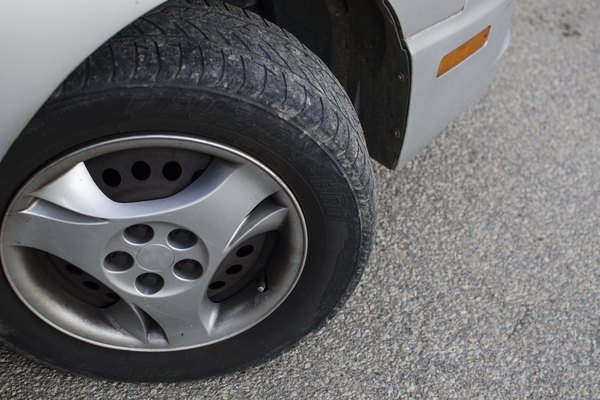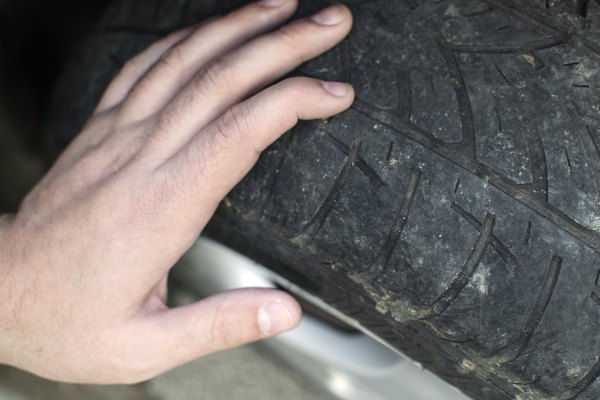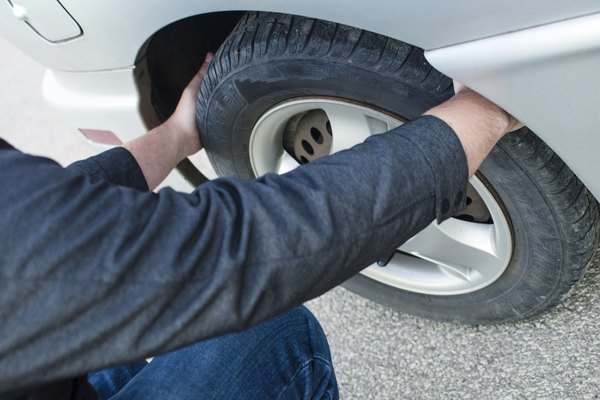How to Tell If Tires Have Dry Rot
by Keith EvansUpdated August 03, 2023
Park the vehicle or trailer on a flat, straight surface. If possible, position the steering wheel so that the tires face straight ahead.

Inspect the tire sidewalls. Starting with the front driver’s side tire, or either tire on a motorcycle or trailer, perform a visual inspection of each tire. Look for cracks, especially multiple deep cracks; numerous cracks are common in dry rot situations. If discoloration surrounds the cracks, the tires may have advanced stages of dry rot.

If you are inspecting a car or truck, turn the steering wheel all the way to the left or right. Note that some vehicle models may require you to insert the key or start the car to accomplish this step.

Repeat the visual inspection, this time while examining the tire tread. While dry rot is most commonly found on the sidewalls of tires, it can infect any part of the tire’s structure. Look carefully at the tread on the exposed portion of the tires; if any cracks run through the tread, especially at a perpendicular angle, the tire may have dry rot.

Replace any tires with dry rot. Dry rot causes extensive cracking in tire surfaces and, if left unchecked, can completely erode the tire’s structural integrity. If tires exhibit any symptoms of dry rot, replace them before attempting to drive the vehicle or use the trailer.
Tips
- According to Tire Care Tips from Bud's Tire and Wheel, dry rot may appear on tires after only three years. If your tires are more than three years old, you should perform routine inspections.
Things You'll Need
- Tires
Warnings
- Never attempt to drive a car or tow a trailer that has tires with dry rot. Dry rot can cause sudden catastrophic tire failure, possibly resulting in injury or death.
Writer Bio
Keith Evans has been writing professionally since 1994 and now works from his office outside of Orlando. He has written for various print and online publications and wrote the book, "Appearances: The Art of Class." Evans holds a Bachelor of Arts in organizational communication from Rollins College and is pursuing a Master of Business Administration in strategic leadership from Andrew Jackson University.








